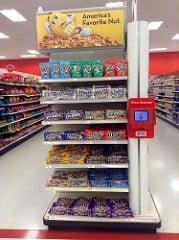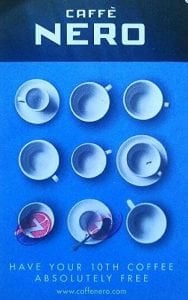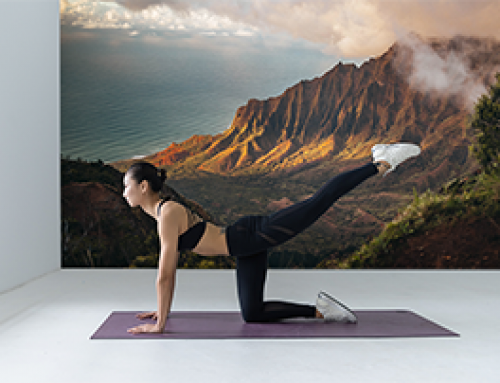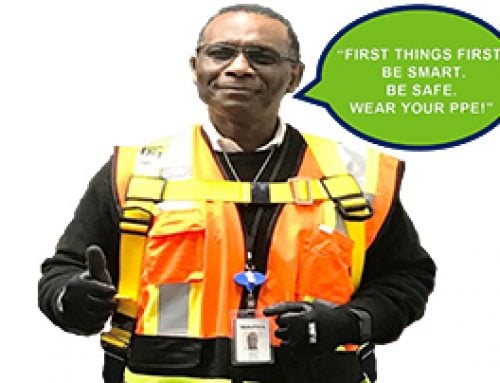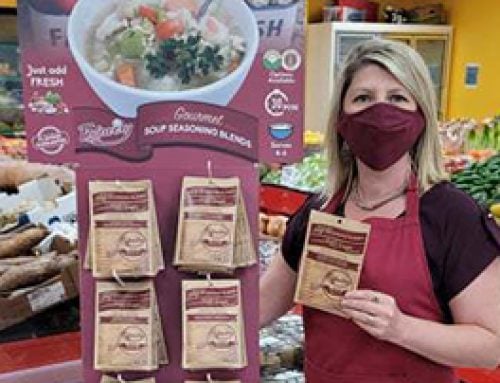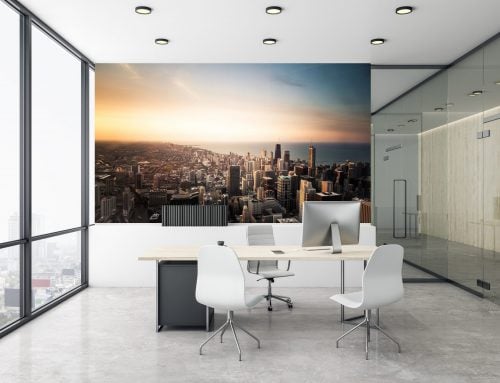Picture this: you’re headed to the checkout at the local grocery store with your cart in tow. You are determined to walk out with only the items you have already when you’re stopped by an eye-catching display.
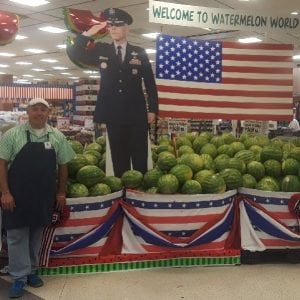
It’s a brightly colored sign touting a new soft drink, candy, or gum. Giving in to impulse, you decide to throw that extra purchase on the conveyor belt. Why not?
This common experience is a byproduct of point of sale (POS) marketing.
POS marketing is a strategic approach used at the point of sale to influence customer behavior and boost sales. POS marketing involves various tactics such as eye-catching displays, personalized recommendations, and promotional offers, all aimed at encouraging impulse buys and enhancing the overall shopping experience right at the checkout area.
Display stands, mobiles, posters, signs, and yes, cardboard cutouts, can all play a role in your in-store marketing efforts.
At Cardboard Cutout Standees, we work with many niche markets on their POS marketing strategies. We’ve developed POS displays for use in grocery stores, convenience stores, gas stations, retail stores, and even breweries. We have a long history of experience in developing and implementing various POS ideas. We have seen firsthand how the right point-of-sale display can make all the difference in increasing sales.
Let’s take a look at what POS marketing is and show some concrete examples of how you can use these ideas in your own business.
What is POS Marketing?

POS marketing entices customers to make an extra purchase close to the cash register, such as at the checkout counter. POS displays are often used with merchandise that a customer likely wasn’t planning to purchase when they entered the store.
Most commonly, Points of Sale signage, displays, and banners encourage customers to add something small to their order. POS marketing can be used for many types of products.
POS marketing often works best with shoppers who are in a hurry or apt to make impulsive purchases. They are also effective in sparking people’s interest in new products they haven’t tried yet
POS Marketing Examples
Below are a few different POS marketing strategies and how these tactics increase sales.
1) Endcaps and unique display stands
One of the most common ways that grocery stores and similar retailers employ POS marketing to influence purchase decisions is with endcaps and free-standing display units (FSDUs).
By using either custom POS displays or specially designed setups from the manufacturer, grocery stores use endcap displays to highlight new or popular products. Endcaps and display stands can be great for encouraging customers to buy complementary items based on a particular product theme, such as how The Crunchy Grocer grouped many of its non-GMO products together to win the grand prize in a retailer endcap competition.
Display stands are also fantastic tools for suggestive selling. For example, placing a cardboard display featuring marshmallows and graham crackers right next to the Hershey bars can be a great way to get shoppers to buy everything they need to make s’mores. Many stores also use eye-level counter displays to sell items like snacks, toys, small electronics, and other products that improve the customer experience before they leave.
POS end caps and unique display stands in grocery stores help customers make quick, last-second choices about extra food products to purchase when nearing the checkout.
2) Display screen add-ons
When pumping gas, you’ve likely noticed the ingenious method that many gas stations use to encourage the sale of extra add-ons on the payment screen.
Prior to pumping gas, gas stations such as Qwik Trip include a screen prompt that asks customers if they would like a car wash in addition to their gas purchase. With the simple touch of the “yes” button, gas stations increase car wash sales. Customers can make a quick, impulsive decision when they already have their credit cards out. This option can also be built into a larger strategy with loyalty cards.
This function works great at any POS that requires customers to enter information or select options from a screen. You could use this strategy to entice people to make a donation to a charity or add a small purchase to their order too.
3) Loyalty Cards
Retail businesses can also get in on the action of POS marketing through loyalty cards. A quick glance in your purse, wallet, or keychain will likely showcase a variety of loyalty cards from the shops that you visit. Chances are they influence you to continue visiting that particular location.
One simple option for a loyalty card is a punch card. For example, if you run a coffee or ice cream shop, creating a “Buy Four, Get the Fifth Free” card can be a great way to keep customers coming back to you for more. The Starbucks Rewards program offers a great look at how a big company has employed this strategy. As evidenced by case studies of companies who have done this effectively, it can really help maintain sustained patronage by customers. ReplyCo has also put together this great list of ways to increase customer loyalty.
Similarly, offering a free gift or a trial sample at the register for signing up for a loyalty card encourages signups.
4) Instant Coupons
Should you have the technological capacity for something a bit more complex, creating a plastic, scannable card that can be swiped with every purchase to accumulate points or coupons is a great tactic. The attractive element of this method is individualizing the offer for each customer based on past purchases.
Grocery stores like King Soopers and pharmacies like CVS are notorious for giving mile-long receipts and other printouts to customers post-purchase that feature relevant coupons and discounts.
Similar to coupons, you can achieve much of the same goal by creating a points accumulation system. At Rite Aid, Wellness card members accrue points that eventually turn into dollars of savings that they can use when making their next purchase at the register.
With this strategy, you can also collect emails for the individuals who sign up, which can help you grow your email marketing campaigns as well.
5) Contests and Drawings
Who doesn’t love winning a prize?
Business owners of many varieties can use this POS marketing strategy to garner more business. Using links on receipt printouts, companies can incentivize the completion of customer surveys by offering a gift card reward or a discount. For instance, the Aldi Satisfaction Survey offers an opportunity for customers who fill out a survey to win a prize.
Implementation of this strategy in an offline setting can be as simple as ordering a custom-branded raffle display or even having customers drop a business card into a bowl on the checkout countertop.
6) Cardboard Cutouts and Signs
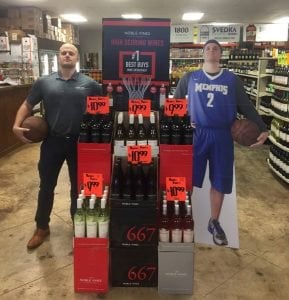
With a little creativity, POS marketing can become a life-sized creative endeavor.
Companies can use thematic cardboard cutouts and signs to raise awareness of their products and set themselves apart from similar products. Stores with limited floor space can use a cardboard cutout that is integrated into the shelving or an endcap.
This POS strategy is popular with breweries and liquor stores. Two common ways breweries use cardboard cutouts in their POS marketing are with face-in-hole stands and cutouts. These options are great for new breweries. They encourage interaction and fun with the brand (not to mention an easy social media share) and improve brand awareness.
7) Dump Bins
Dump bins are large round or square floor display containers that sit on the ground where products are dumped. Items in dump bins are usually assumed to be affordable or on sale and are excellent ways to increase impulse buying. They are often used in retail settings and can be placed near the register or at the entrance to a store. Dump bins can be used to promote clearance items, seasonal items, or new product offerings.
When using dump bins as a point-of-sale marketing tactic, it is important to ensure that the bins are well-lit and placed in high-traffic areas. The products in the bins should also be clearly visible and attractively displayed.
8) Shelf Talkers
Shelf talkers are usually small signs or stickers that are placed on shelves near your product. Shelf talkers can be used to highlight special features of your product, give information about promotions, or simply make your product more visible. You can also use these to display reviews or ratings of your products (such as for wine, spirits, and craft beer) or to call out special offers, such as free samples.
These are used more often as a Point of Purchase (POP) tactic, meaning they’re out in the retail environment as opposed to near the checkout area, but if you have displays near your counter, shelf talkers work great there too.
9) Interactive Digital Displays
Interactive digital displays are an engaging way to capture customer attention at the point of sale. These displays can feature touch screens that allow customers to browse products, watch promotional videos, or even play interactive games related to the products sold. For instance, a cosmetic store could have a digital display where customers can virtually try on makeup, helping them make an informed decision before purchasing. This interactive experience entertains the customers and provides them with valuable product information that can lead to more sales.
10) Augmented Reality Experiences
Augmented reality (AR) at the point of sale offers a futuristic and immersive way to increase customer engagement. For example, a clothing retailer could use AR mirrors, allowing customers to try on clothes virtually. This technology not only adds fun to shopping but also helps customers visualize how a product would look on them without physically trying it on. It’s an innovative way to enhance customer experience and drive sales, especially for shoppers in a hurry or who prefer to use something other than dressing rooms.
11) Mobile Payment Integration
Integrating mobile payment options with POS marketing can streamline checkout and provide additional marketing opportunities. For example, a store could send targeted offers or discounts directly to a customer’s mobile wallet app, which the customer can redeem at the POS. This makes the payment process faster and more convenient and encourages customers to make additional purchases through personalized deals.
12) QR Code Campaigns
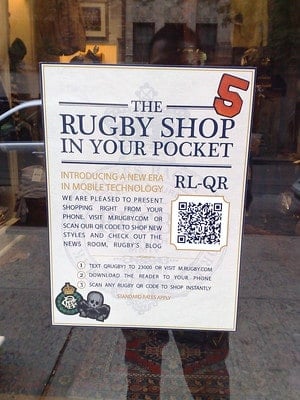
“Ralp Lauren Rugby QR code” by markguim is licensed under CC BY 2.0.
Retailers can strategically place QR codes at the POS to engage customers. When scanned, these codes can lead to exclusive offers, detailed product information, or interactive content such as tutorials or product demos. For example, a beauty store could use QR codes next to skincare products, linking to video demonstrations or customer reviews. This strategy is both informative and engaging, encouraging impulse purchases.
13) Themed Seasonal Displays
Creating POS displays that change with seasons or holidays can keep the shopping experience fresh and exciting. For example, a bookstore could set up a display of summer reads near the checkout during the warmer months, or a grocery store could showcase holiday-themed recipes and the ingredients needed. Seasonal displays tap into customers’ current interests and needs, increasing the likelihood that they’ll buy something extra at checkout.
14) Product Sampling Stations
Setting up sampling stations near the POS area can encourage last-minute additions to a customer’s purchase. For instance, a gourmet food store could offer samples of a new cheese or a specialty condiment. Tasting a product can be a powerful motivator for purchase, particularly food and beverage items.
15) Customized Product Recommendations
While employees should be trained to upsell customers on the sales floor, they should also be trained to cross-sell at checkout. Cross-selling is to suggest items that are related to the customer’s purchase. For example, a clothing store might recommend belts or handbags, a home improvement store might recommend buckets and carpenter pencils, and a shoe store might recommend new shoelaces or deodorizing spray.
Or, using data analytics and previous purchase history, stores using POS systems with recommendation engines can offer personalized suggestions on digital receipts. For example, a pet store can recommend related treats and toys, a book store can recommend similar books, and a clothing store can offer a discount for related accessories. This method leverages the power of data to provide a tailored shopping experience, making customers feel understood and increasing the likelihood of additional sales.
Increase Sales with POS Marketing
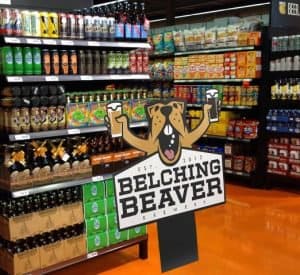
As you can see, there are many different options when it comes to POS marketing and displays. Depending on what kind of business you operate, you may find that certain strategies work better than others.
It’s always a good idea to test and track your POS marketing strategies so that you can see what works best.
Cardboard cutouts and custom Point of Sale (and Point of Purchase) displays can be a perfect option for your marketing plan. If you need some ideas or aren’t sure where to start, feel free to contact us for help. We are happy to provide ideas and give feedback on using custom displays to develop an effective point-of-sale marketing strategy to boost sales in your business.



